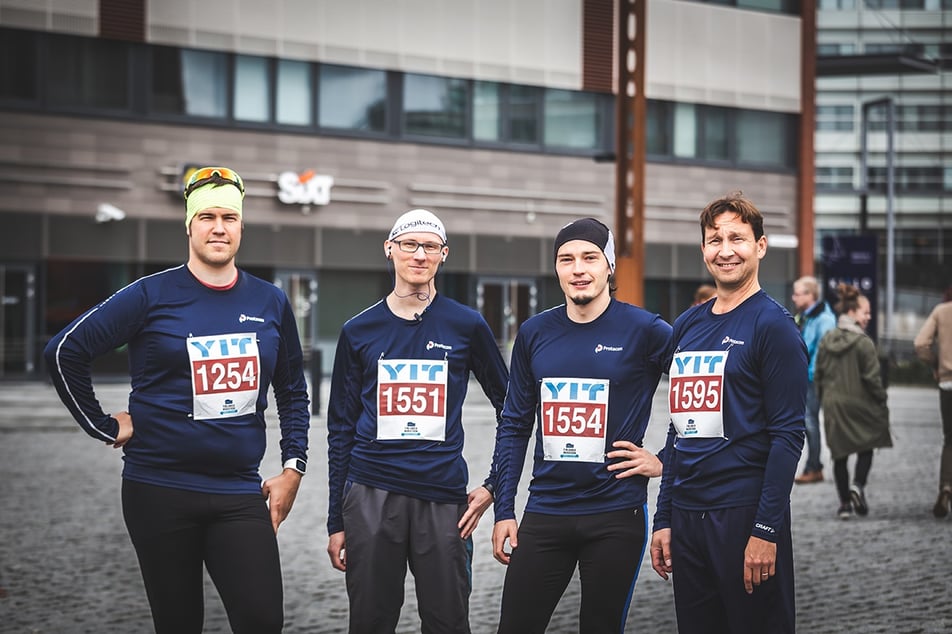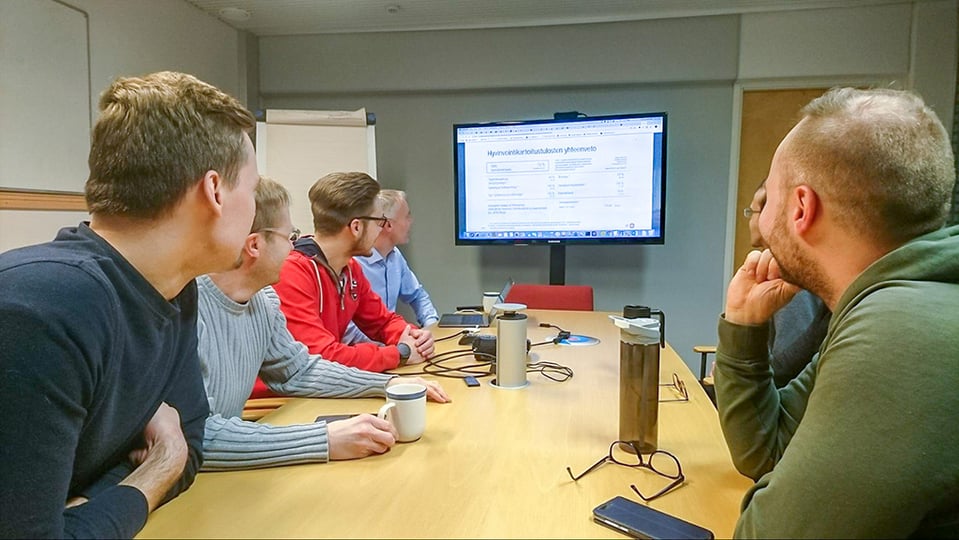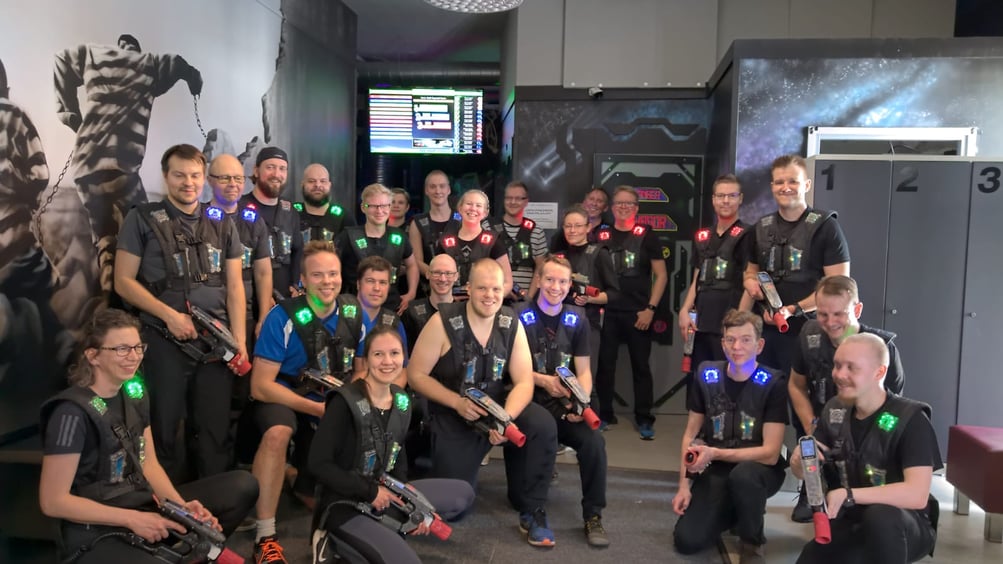
Do you know what a Monday barometer is? No problem, neither does Google. I invented the term to express the rate of satisfaction of people with their current daily lives or jobs.
It shows on your face and feels in the whole body when starting a new work week after the weekend. There is no scale or measure for it, but everyone can always personally feel it on Monday mornings. How did your last Monday feel like?
Behind this feeling, there is a concept called workplace wellbeing. I have become familiar with the topic in recent years while reorganizing our toolbox for workplace wellbeing with our core team at Pinja. In our gamebook, workplace wellbeing consists of four basic elements:
- Do I know why: Do I know why I am here and what the meaning of my work is?
- Do I know how: Do I have the necessary skills and competence for my job?
- Am I capable: Are my work and other dimensions of life balanced and is my work capacity sufficient?
- Do I want: Do I really want to do the work that I am doing?
Supervisor leads
Supervisors play a central role in the management of workplace wellbeing. At Pinja, we do not have full-time supervisors, but managerial work is an additional responsibility in specialist work. It is entrusted to people who can carry it out successfully and show willingness to help, in addition to themselves, also others to succeed. For many of our specialists, managerial work has offered a good way to increase the importance and responsibility of their own work thus providing a great step in their career paths.
Our supervisors spar the members of their teams in the above areas aiming to ensure the best possible condition for each of them. If the work capacity is sunk, it is no use concentrating on further education. Conversely, if motivation or the sense of importance of work is missing, not even the best competence can produce results. Each area must be in good condition for our specialists to do their best. We meet regularly to discuss these themes on a one-to-one basis.
When looking for the significance of work, our growing company size and extensive operations play to our advantage. We can offer excellent alternatives for task rotation, which is not possible for many smaller operators. My own career story is a great example of this: I started in 2009 as a software designer, but my interest shifted, only less than six months later, to research and introduction of agile methods.
Each area must be in good condition for our specialists to do their best.
For some time, I worked as a trainer and couch, both internally and for customers, and later took over responsibilities for project management and financing. The birth of my first child and a six-month period as a stay-at-home dad brought some breathing space in 2013: integrating work and family life succeeded very well.
Returned to work, I started heading sales and commissioning projects for our vehicle inspection service product, which was an intensive period of 18 months and 40,000 kilometers. After rummaging through this path, the next step brought management and leadership responsibilities. In this role, I have been working for many years in different jobs.
If I had not had the possibility to modify my tasks already in the early stage, I would certainly have changed the employer quite soon. Now, our common story has continued for a decade and my own Monday barometer is still deep in the green scale area.
Toolbox for wellbeing at work

Our Oulu team scrutinizing the results of the workplace wellbeing survey. For further information on QWL, you can read, for example, Marko Kesti’s blog.
What do we do for workplace wellbeing other than training our managers and enabling internal mobility? First, it is good to analyze the current state to detect whether things improve in the long run.
We measure our workplace wellbeing annually with an extensive survey carried out by an independent body, which gives us a QWL (Quality of Working Life) index as a long term reference value. Pinja’s latest QWL index was 66%. For comparison, the average of the working life quality in whole Finland was 59% in 2016 (Kesti, 2016). Equal treatment of employees, relations between workmates and a cooperative culture of helping each other have appeared as particularly successful areas in our measurements.
Conversely, things to improve include the quantity and quality of feedback received for work. Results of the wellbeing survey are analyzed by managers separately for each team and actions for improving workplace wellbeing are always defined together based on the results. In this way, each team participates in the development of comprehensive workplace wellbeing with the best possible accuracy.
Our employee benefits guide our specialists to take good care of themselves and their health. We support cultural and sports activities by both assembling our own sports teams and offering financial support. Our occupational healthcare service also covers part of dental care costs, and we leave the office regularly to do sports together.
In the spring 2019, we offer all our employees the possibility to receive real-time and accurate information about their own health by building a partnership with FirstBeat Technologies to improve our workplace wellbeing. Pleasingly many of Pinja’s people have seized this opportunity.

This spring’s sports afternoon was spent e.g. at Megazone.
For skills development, we have dedicated methods for each business area. In digital business – the area that I am most familiar with – we invest 10 days a year for the development of each of our specialists.
How are you?
I challenge you to leave your comfort zone and honestly think about your Monday barometer. Do you know why and how, do you have sufficient capacity, and do you want to do the work you are doing right now? Life is too short to be unhappy at work.
Read more

Jaakko Kaski
The author works as the HR manager in Pinja’s digital business activities, HR business partner for a few business areas and as the supervisor for his supervisor team.
Back to the Pinja Blog
Categories
- Pinja Career (63)
- Production development (39)
- Software development (39)
- Business Intelligence (35)
- Digital business (30)
- Circular economy and natural resources (26)
- Sustainability (26)
- Ecommerce (21)
- Digital society (20)
- Industrial digitalization (19)
- Maintenance development (19)
- Supply chain management (19)
- ERP (18)
- ICT services (18)
- Industrial innovation (11)
- Health and welfare technology (9)
- Forest industry ERP (8)
- Lean (4)